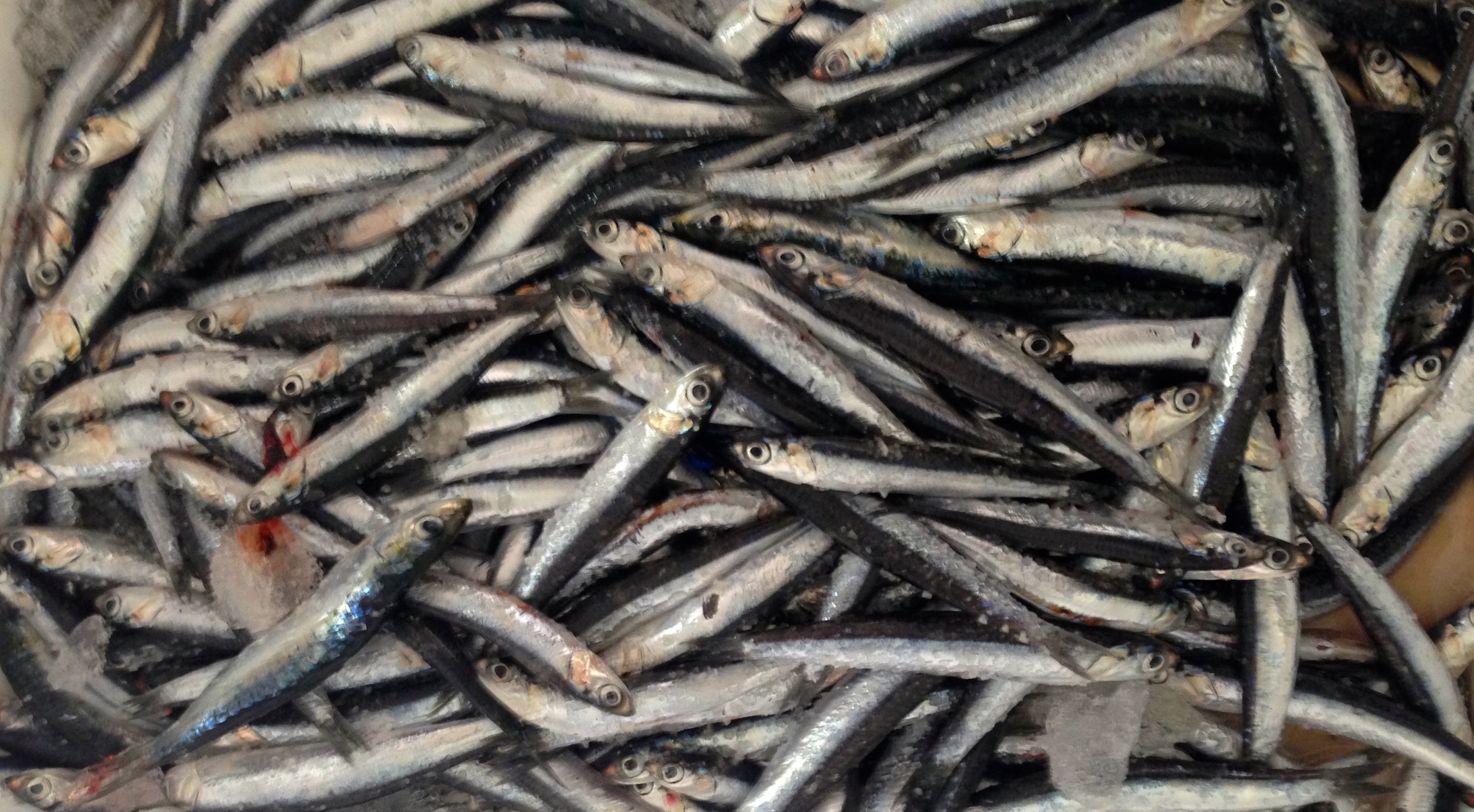Upon entering, he warned us of the smell. At first I thought it wasn’t so bad, but then the scent of fermenting anchovies and salty air burned my nostrils and back of the throat before settling deep in my lungs. The room we entered had fluorescent lighting and white tiles and I felt an urge to turn around back into the warm Amalfi sunlight and fresh sea-sprayed air. He ushered us into the cavernous facility with a warm smile and kind eyes and I figured I was willing to stick around for a bit longer. We walked past a man carefully labeling and boxing jars of alici and into a room where small wooden barrels were stacked as high as the ceiling. It seemed as if we might be in the hull of an old pirate ship — stench included — the barrels had been crusted over with salty remnants, making them look more like my 2nd grade science project than containers of a substance fit for human consumption.
He stood in front of us in stained work boots, plain jeans and a long sleeve white shirt that was protected by a black apron. With a jovial way about him, he explained that inside the chestnut barrels, colatura was being made. Each barrel took one to two years in order to fully mature and would only produce a small amount of the precious amber liquid in the end. Pointing to a stack in the corner, he explained that they were reserved for nearby restaurants who coveted the labor intensive ingredient and claimed their very own barrels.
As a third generation colatura producer, Giulio is the keeper of an artisan craft whose origins date back to the Roman times. In those days, the fishy condiment was called garum and it was made by fermenting fish guts, under salt until it liquefied. Today, in the small town of Cetara, found at the bottom of the winding Amalfi Coast, the producers at Nettuno make it using only anchovy bodies under salt. He brought us back into the main room to begin demonstrating how the small treasure chests were prepared. Standing at a table, he began popping off the heads of small, silvery anchovies caught from the sea and delivered to the dock just outside his door. He placed one of the small, empty wooden buckets on the floor and crouched onto a low bench that allowed him to hover over it. A generous layer of salt, a layer of anchovies, salt, anchovies, salt and so on it went.
Giulio skillfully placed the little fish in tightly packed rows, layer by layer, while we stood in a circle bombarding him with questions. “What season are the fish best in?” “What does all that salt do to your hands?” The inquiries continued and he happily and calmly answered each of them. When the barrel was filled almost to the top, he showed us how all the makers had their own “signature” — a way of arranging fish on the top layer. His was reminiscent of a sun burst, as he placed them in concentric circles before adding a final, very thick layer of salt. He placed a wooden lid, that was smaller than the circumference of the barrel, on top of the anchovies with a large stone on top of that to weigh it down. He went on to explain that as the salt drew water from the flesh of the anchovies, the liquid would rise up, and the stone sink, compressing the anchovies down.
Thrilled with what was to follow, he motioned to another barrel that was now sitting on top of the table where the anchovy beheading had occurred. It was propped up on a wooden pedestal, with a glass vessel underneath. Using a thin pick, he poked three small holes in the bottom of the barrel. The word colatura comes from the Italian word colare: to drip, ooze, drain. Slowly, drop by drop, the amber-hued fish sauce flowed past what remained of the macerated anchovies and out of the these small holes, drip drip drip. Giulio grinned proudly, “that is how you make colatura”, he said.
I bought a bottle and returned to my apartment in a small landlocked town in the middle of Piemonte. One night in late spring, my roommate from Puglia and I decided we would make it. We needed to taste the sea. We followed Giulio’s guidelines for preparing the perfect spaghetti alla colatura. No salt in the pasta water. Good pasta, from Campania (clearly). Smash a few cloves of garlic. Two spoons of olive oil per person. One spoonful of colatura for every two of oil. Lots of parsley, chopped finely. We beat the mixture with a fork until it emulsified before pouring it over the hot pasta. First bite and the striking umami flavor of the colatura had a only mild fishy essence. We started adding a bit more, it was addiction at first bite. We were able to make and inhale a meal in just 10 minutes flat, but 36 months of care and aging had gone into that little bottle of gold. I thought of Giulio standing next to his little treasure chests in that small laboratory on the Bay of Salerno, beaming as he shared his story and his precious fish sauce with us. It tasted like a gift from the mediterranean.
Pia has her B.A. in Anthropology, Social Entrepreneurship, and International Affairs from Northeastern. She's deeply passionate about changing "the system" (or systems, e.g. food, patriarchal, political...) and using butter liberally while cooking.







